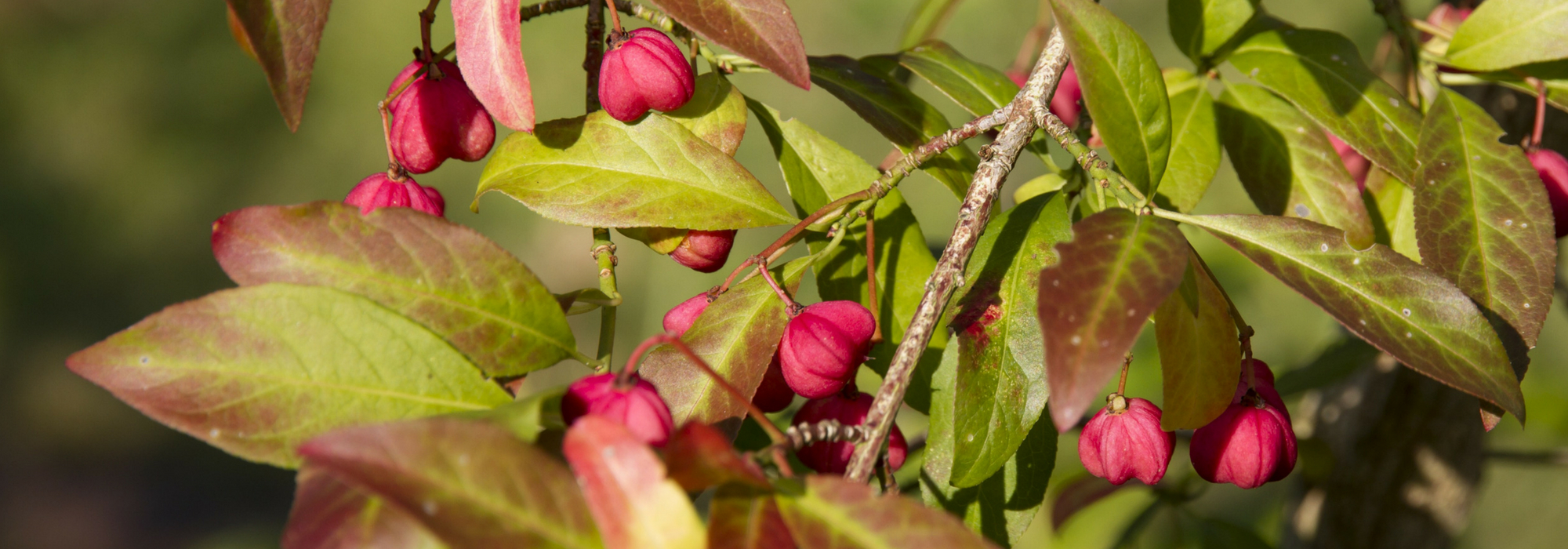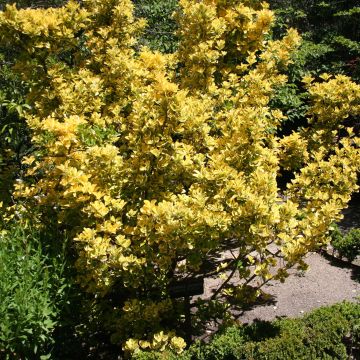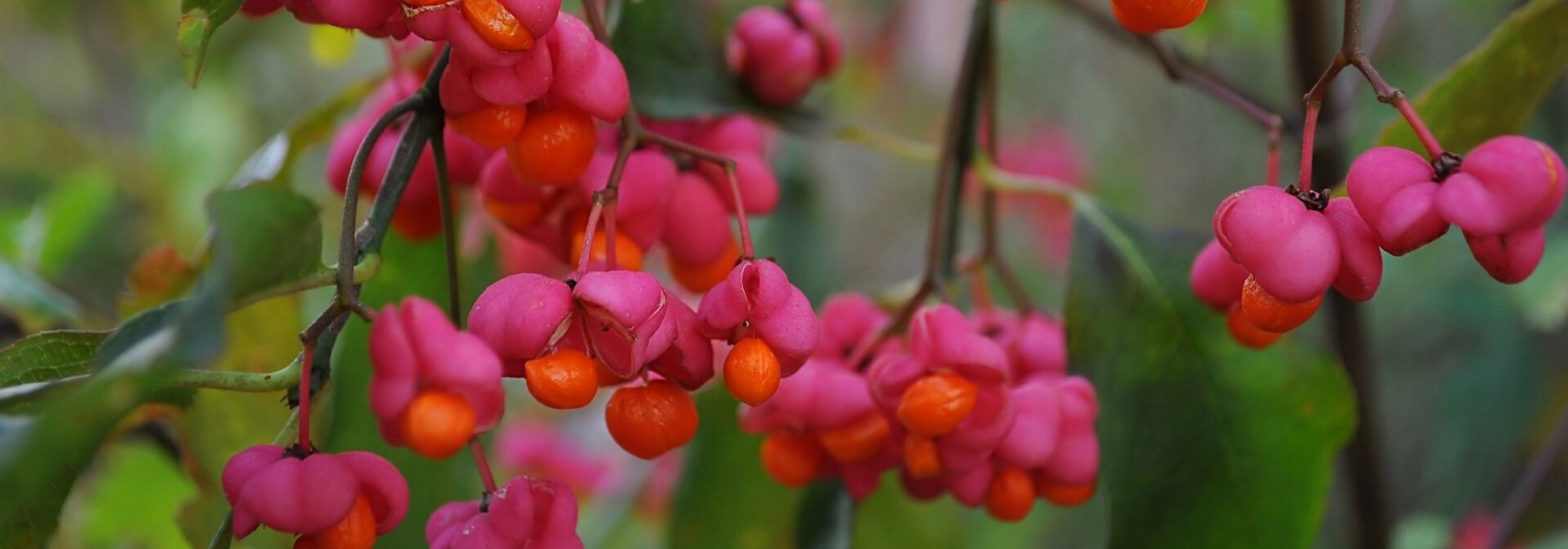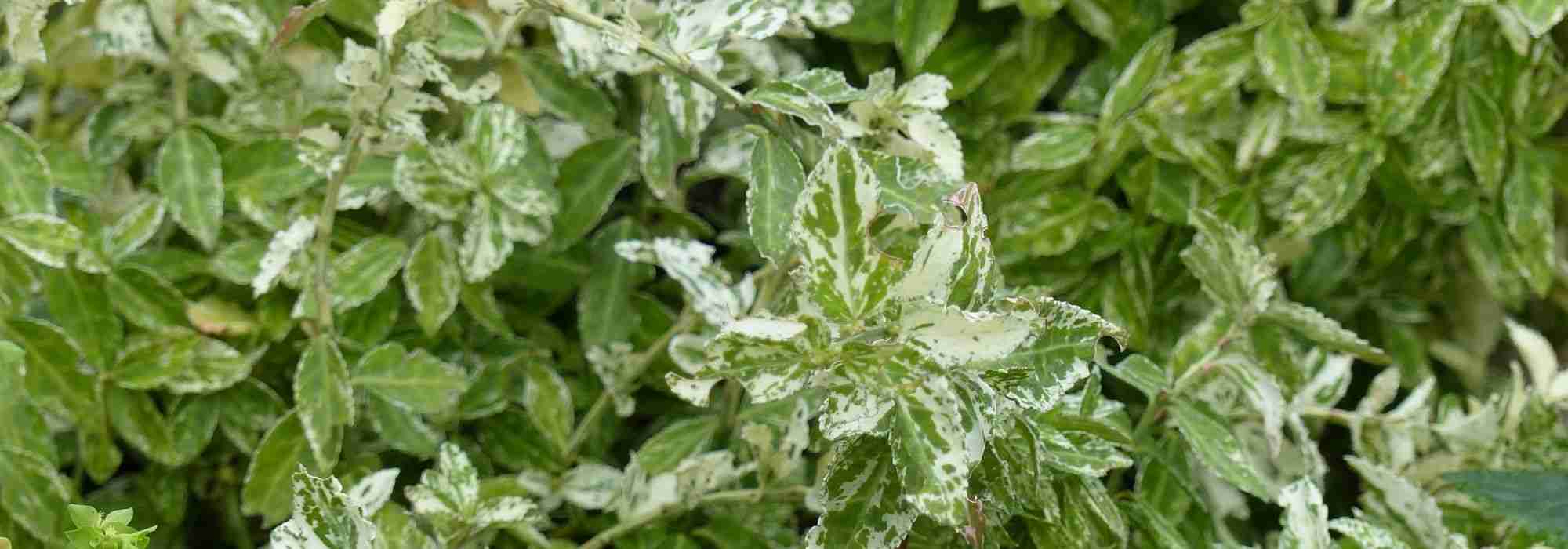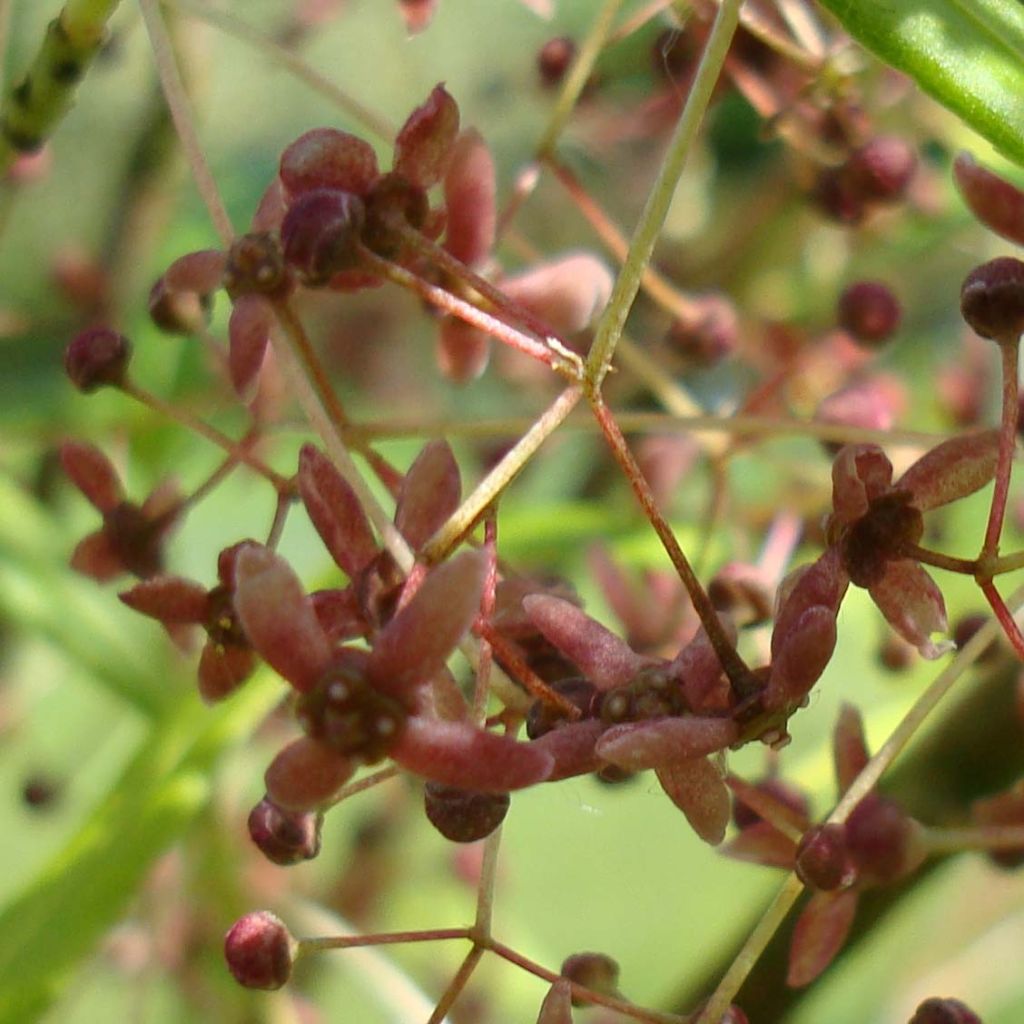

Euonymus clivicolus var. rongchuensis - Spindle


Euonymus clivicolus var. rongchuensis - Spindle
Euonymus clivicolus var. rongchuensis - Spindle
Euonymus clivicolus var. rongchuensis
Chinese Winged Spindle
Tiny, feeble stem... To be seen in spring... Otherwise, fast and careful delivery as usual, thank you.
Caroline, 27/11/2019
Special offer!
Receive a €20 voucher for any order over €90 (excluding delivery costs, credit notes, and plastic-free options)!
1- Add your favorite plants to your cart.
2- Once you have reached €90, confirm your order (you can even choose the delivery date!).
3- As soon as your order is shipped, you will receive an email containing your voucher code, valid for 3 months (90 days).
Your voucher is unique and can only be used once, for any order with a minimum value of €20, excluding delivery costs.
Can be combined with other current offers, non-divisible and non-refundable.
Why not try an alternative variety in stock?
View all →This plant carries a 24 months recovery warranty
More information
We guarantee the quality of our plants for a full growing cycle, and will replace at our expense any plant that fails to recover under normal climatic and planting conditions.
Would this plant suit my garden?
Set up your Plantfit profile →
Description
The Euonymus clivicolus var. rongchuensis is a deciduous spindle tree that is still rarely available for sale. This Chinese species will delight collectors of rare shrubs and is distinguished by its modest growth, its long lanceolate leaves, but above all by its curious and decorative fruiting that lasts a long time in winter. The large fruits with well-developed 5 wings change from cream to pink and then to bright pink when opening to reveal very bright orange berries. Place this amazing spindle tree in a prominent position, in partial shade and in soil that remains fresh, for example in the centre of a large bed of perennials and low-growing shrubs.
This spindle tree, native to southwest China, has similarities with the Euonymus cornutus var. quinquecornutus, which is more commonly cultivated: it resembles it in the appearance of its fruits and foliage. However, it has the advantage of having a more upright habit and slightly faster growth. All these shrubs in the Celastraceae family are native to Asia.
The Euonymus clivicolus is a moderately fast-growing shrub with an upright habit, slightly flaring upwards. Its growth remains modest, on average 1.50m (4 ft 11 in) tall and 90 cm (35.4 in) wide at maturity. Its final size is estimated to be a maximum of 2.50 m (8 ft 2 in) in height in our gardens. Its branches bear long, narrow leaves, more or less upright, 7 to 10 cm (2.8 to 3.9 in) long. They are medium green, shiny, thick, lanceolate, with finely toothed edges. This foliage remains attached to the branches for a long time before falling.
The flowering, discreet but long-lasting, occurs from April to June. The small flowers, speckled with faded purple, are grouped in clusters or corymbs. They measure about 1cm (0.4 in) in diameter and have 4 tiny petals. They attract pollinating insects and gradually form original and very decorative fruits until winter. The fruit's envelope, equipped with 5 large wing-shaped or horn-shaped protrusions, changes from cream yellow to pink and then to bright pink. It gradually opens to let hang the very pronounced bright orange berries. Do not be fooled by this beautiful appearance, they are not edible, nor are any other parts of the shrub: leaves and bark. Keep them out of the reach of children who may be tempted by this attractive fruiting. However, birds will be satisfied with them in winter.
This original spindle tree is a very interesting shrub for garden decoration in autumn and winter. Its unusual and remarkably coloured fruiting makes it a choice specimen that the gardener will pause in front of for long moments. It can be placed in the foreground of a bed of shrubs chosen for their autumn colours (Cotinus, other deciduous spindle trees, Hamamelis), but also in the centre of a small scene composed of late-flowering robust perennials: asters, tall sedums, colourful Miscanthus and panicles, Japanese anemones and eupatoriums.
Euonymus clivicolus var. rongchuensis - Spindle in pictures




Plant habit
Flowering
Foliage
Botanical data
Euonymus
clivicolus
var. rongchuensis
Celastraceae
Chinese Winged Spindle
Cultivar or hybrid
Other Euonymus - Spindle tree
View all →Planting and care
Plant this Euonymus in spring or autumn, in a sunny but not scorching or partially shaded position, in a well-prepared and well-drained soil. It prefers a rich, deep and moist soil throughout the year. You can add gravel (in excessively clayey and compacted soil), compost, well-rotted manure, and monitor watering according to your climate and region. Prune lightly in late winter to promote branching. This Chinese Euonymus is much less prone to attacks from caterpillars and other insects than our European Euonymus.
Planting period
Intended location
Care
Planting & care advice
-
, onOrder confirmed
Reply from on Promesse de fleurs
Similar products
Haven't found what you were looking for?
Hardiness is the lowest winter temperature a plant can endure without suffering serious damage or even dying. However, hardiness is affected by location (a sheltered area, such as a patio), protection (winter cover) and soil type (hardiness is improved by well-drained soil).

Photo Sharing Terms & Conditions
In order to encourage gardeners to interact and share their experiences, Promesse de fleurs offers various media enabling content to be uploaded onto its Site - in particular via the ‘Photo sharing’ module.
The User agrees to refrain from:
- Posting any content that is illegal, prejudicial, insulting, racist, inciteful to hatred, revisionist, contrary to public decency, that infringes on privacy or on the privacy rights of third parties, in particular the publicity rights of persons and goods, intellectual property rights, or the right to privacy.
- Submitting content on behalf of a third party;
- Impersonate the identity of a third party and/or publish any personal information about a third party;
In general, the User undertakes to refrain from any unethical behaviour.
All Content (in particular text, comments, files, images, photos, videos, creative works, etc.), which may be subject to property or intellectual property rights, image or other private rights, shall remain the property of the User, subject to the limited rights granted by the terms of the licence granted by Promesse de fleurs as stated below. Users are at liberty to publish or not to publish such Content on the Site, notably via the ‘Photo Sharing’ facility, and accept that this Content shall be made public and freely accessible, notably on the Internet.
Users further acknowledge, undertake to have ,and guarantee that they hold all necessary rights and permissions to publish such material on the Site, in particular with regard to the legislation in force pertaining to any privacy, property, intellectual property, image, or contractual rights, or rights of any other nature. By publishing such Content on the Site, Users acknowledge accepting full liability as publishers of the Content within the meaning of the law, and grant Promesse de fleurs, free of charge, an inclusive, worldwide licence for the said Content for the entire duration of its publication, including all reproduction, representation, up/downloading, displaying, performing, transmission, and storage rights.
Users also grant permission for their name to be linked to the Content and accept that this link may not always be made available.
By engaging in posting material, Users consent to their Content becoming automatically accessible on the Internet, in particular on other sites and/or blogs and/or web pages of the Promesse de fleurs site, including in particular social pages and the Promesse de fleurs catalogue.
Users may secure the removal of entrusted content free of charge by issuing a simple request via our contact form.
The flowering period indicated on our website applies to countries and regions located in USDA zone 8 (France, the United Kingdom, Ireland, the Netherlands, etc.)
It will vary according to where you live:
- In zones 9 to 10 (Italy, Spain, Greece, etc.), flowering will occur about 2 to 4 weeks earlier.
- In zones 6 to 7 (Germany, Poland, Slovenia, and lower mountainous regions), flowering will be delayed by 2 to 3 weeks.
- In zone 5 (Central Europe, Scandinavia), blooming will be delayed by 3 to 5 weeks.
In temperate climates, pruning of spring-flowering shrubs (forsythia, spireas, etc.) should be done just after flowering.
Pruning of summer-flowering shrubs (Indian Lilac, Perovskia, etc.) can be done in winter or spring.
In cold regions as well as with frost-sensitive plants, avoid pruning too early when severe frosts may still occur.
The planting period indicated on our website applies to countries and regions located in USDA zone 8 (France, United Kingdom, Ireland, Netherlands).
It will vary according to where you live:
- In Mediterranean zones (Marseille, Madrid, Milan, etc.), autumn and winter are the best planting periods.
- In continental zones (Strasbourg, Munich, Vienna, etc.), delay planting by 2 to 3 weeks in spring and bring it forward by 2 to 4 weeks in autumn.
- In mountainous regions (the Alps, Pyrenees, Carpathians, etc.), it is best to plant in late spring (May-June) or late summer (August-September).
The harvesting period indicated on our website applies to countries and regions in USDA zone 8 (France, England, Ireland, the Netherlands).
In colder areas (Scandinavia, Poland, Austria...) fruit and vegetable harvests are likely to be delayed by 3-4 weeks.
In warmer areas (Italy, Spain, Greece, etc.), harvesting will probably take place earlier, depending on weather conditions.
The sowing periods indicated on our website apply to countries and regions within USDA Zone 8 (France, UK, Ireland, Netherlands).
In colder areas (Scandinavia, Poland, Austria...), delay any outdoor sowing by 3-4 weeks, or sow under glass.
In warmer climes (Italy, Spain, Greece, etc.), bring outdoor sowing forward by a few weeks.








































